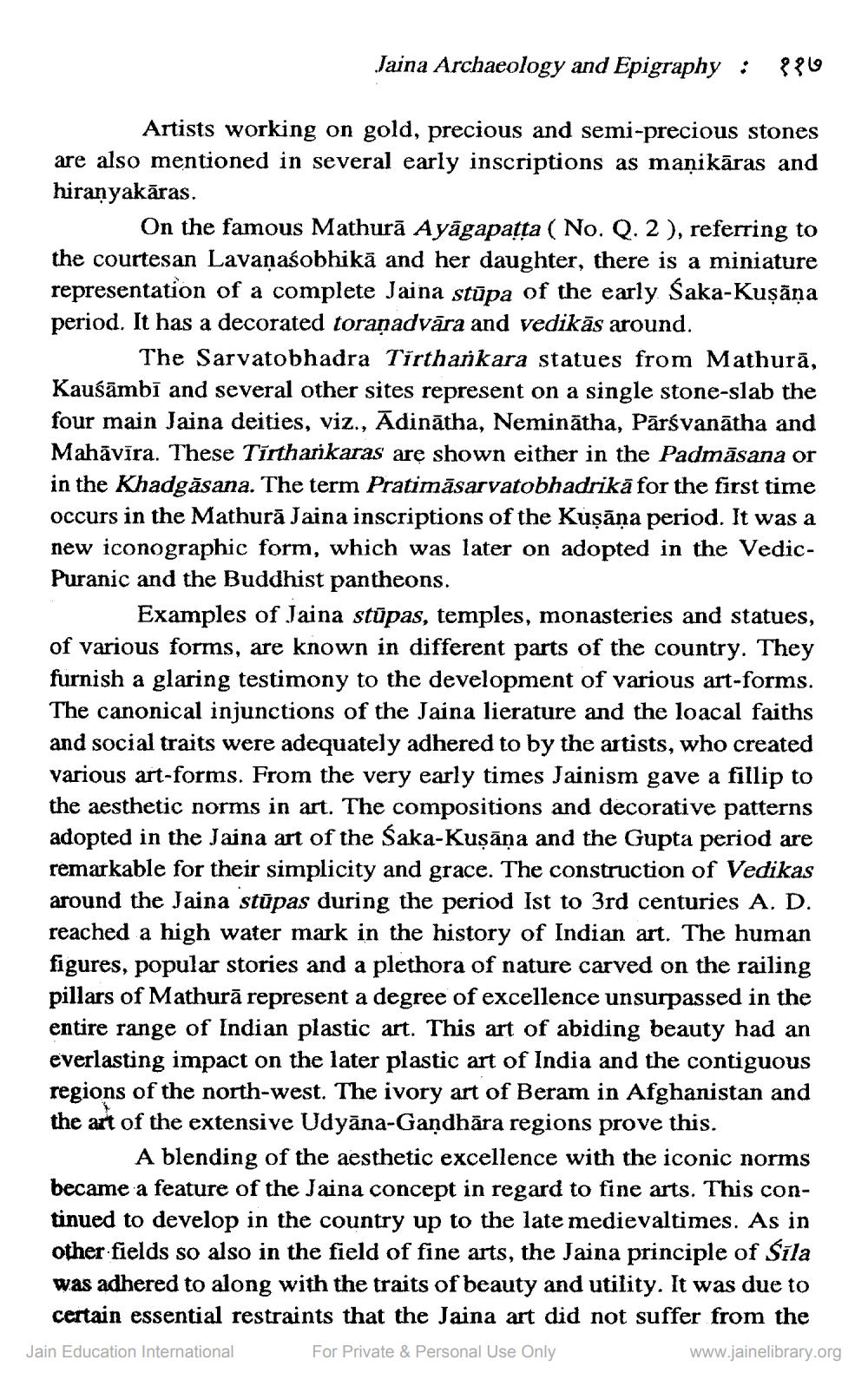________________
Jaina Archaeology and Epigraphy : 889
Artists working on gold, precious and semi-precious stones are also mentioned in several early inscriptions as maņikāras and hiranyakāras.
On the famous Mathurā Ayāgapatta ( No. Q. 2), referring to the courtesan Lavaņaśobhikā and her daughter, there is a miniature representation of a complete Jaina stūpa of the early. Śaka-Kuşāņa period. It has a decorated toranadvāra and vedikās around.
The Sarvatobhadra Tirtharkara statues from Mathurā, Kaušāmbī and several other sites represent on a single stone-slab the four main Jaina deities, viz., Ādinātha, Neminātha, Pārsvanātha and Mahāvīra. These Tīrtharikaras are shown either in the Padmāsana or in the Khadgăsana. The term Pratimāsarvatobhadrikā for the first time occurs in the Mathurā Jaina inscriptions of the Kuşāņa period. It was a new iconographic form, which was later on adopted in the VedicPuranic and the Buddhist pantheons.
Examples of Jaina stūpas, temples, monasteries and statues, of various forms, are known in different parts of the country. They furnish a glaring testimony to the development of various art-forms. The canonical injunctions of the Jaina lierature and the loacal faiths and social traits were adequately adhered to by the artists, who created various art-forms. From the very early times Jainism gave a fillip to the aesthetic norms in art. The compositions and decorative patterns adopted in the Jaina art of the Saka-Kuşāņa and the Gupta period are remarkable for their simplicity and grace. The construction of Vedikas around the Jaina stūpas during the period Ist to 3rd centuries A. D. reached a high water mark in the history of Indian art. The human figures, popular stories and a plethora of nature carved on the railing pillars of Mathurā represent a degree of excellence unsurpassed in the entire range of Indian plastic art. This art of abiding beauty had an everlasting impact on the later plastic art of India and the contiguous regions of the north-west. The ivory art of Beram in Afghanistan and the art of the extensive Udyāna-Gandhāra regions prove this.
A blending of the aesthetic excellence with the iconic norms became a feature of the Jaina concept in regard to fine arts. This continued to develop in the country up to the late medievaltimes. As in other fields so also in the field of fine arts, the Jaina principle of Sila was adhered to along with the traits of beauty and utility. It was due to
certain essential restraints that the Jaina art did not suffer from the Jain Education International For Private & Personal Use Only
www.jainelibrary.org




